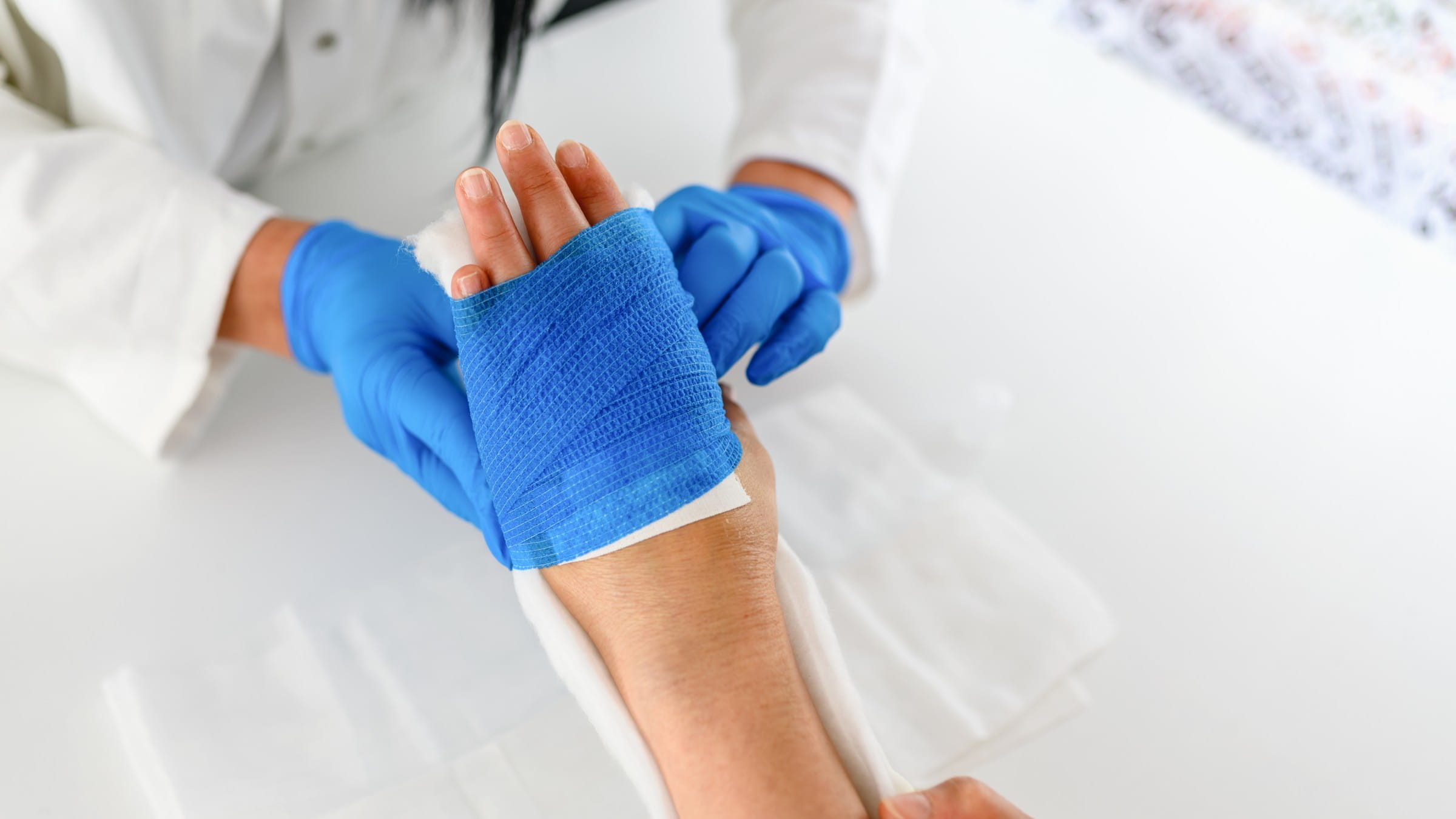
Have you had a wound that seems to be taking forever to heal? If it's been a month or more, it could be a sign of something more serious.
Gayle Gordillo, MD, a plastic surgeon and medical director for The Ohio State University’s Comprehensive Wound Center, says a seemingly simple cut can evolve into a chronic wound over time.
She shares insight about when to call your doctor, and the latest wound care treatments being offered at Ohio State.First, here are signs your wound is healing properly
A wound has natural healing stages: After a wound bleeds and clots, a scab starts to form. There may be some swelling, pain, redness and clear discharge, but Dr. Gordillo says that’s OK as long as it’s not too much and doesn’t last more than a week. As the wound starts to heal, new tissue will start to grow over the wound. Typically, this healing process takes a couple of weeks, depending on the severity of the wound.
Six signs that your wound is not healing
- Drainage from the wound such as pus
- Redness or warmth around the wound, particularly if it’s spreading
- Bad odor
- Increasing pain
- Darkening skin at the edges
- Fever
If it’s been a month or so since the injury and you have any of these issues, you should see a doctor, explains Dr. Gordillo.
The most common causes of chronic wounds
Many chronic wounds are the result of pressure injuries in people with decreased sensation. For example, those suffering from diabetic foot ulcers can’t feel their feet as well so their shoes may not fit properly, resulting in sores. It’s also more common for those who suffer from varicose veins or blood clots in the leg to get chronic wounds. Less common are infections from cuts and surgery.
Treatment options
The Wexner Medical Center offers many treatment options: Depending on the type and severity of the wound, treatment can range from antibiotics to diagnostic testing to compression therapy. See the videos below for more information.
For more extreme cases, hyperbaric oxygen therapy may be necessary. That’s where a patient is exposed to 100% oxygen for two hours in a pressurized chamber. The extra oxygen (typically we breathe just 20% oxygen) helps heal infections.
“At Ohio State, you have access to the most cutting-edge therapies and research.” Gayle Gordillo, MD, plastic surgeon and medical director for The Ohio State University’s Comprehensive Wound Center.
Diagnostic testing helps determine why a wound is not healing.

Our care, your place
Telehealth visits are a simple way to manage your health, wherever you are.
See what telehealth can do for you






